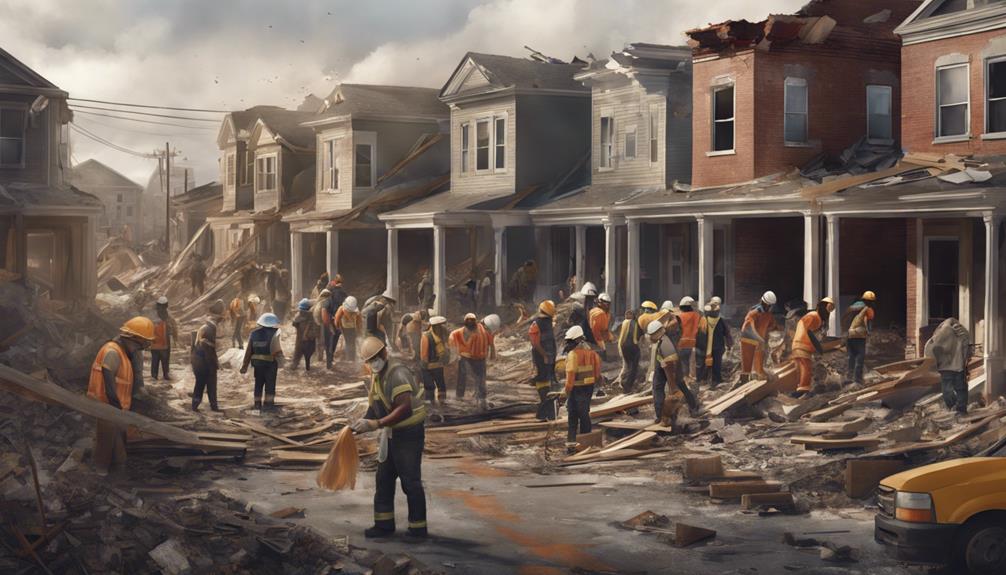In the aftermath of a disaster, the intricate web of mechanisms that facilitate community cohesion and recovery emerges as a critical area of study. How do individuals, bound by a shared experience of devastation, transcend the chaos to rebuild and fortify their communities? By dissecting the multifaceted layers of human interaction, organizational structures, and societal responses post-disaster, we uncover the underlying dynamics that propel communities towards resilience. Stay tuned as we unravel the intricate tapestry of community resurgence and explore the underlying principles that guide collective action in times of upheaval.
Key Takeaways
- Formation of mutual aid networks fosters direct assistance and support.
- Mobilizing volunteers and engaging the community enhances recovery efforts.
- Collaborative rebuilding projects promote unity and long-term resilience.
- Effective communication and information dissemination are vital for community recovery.
Mutual Aid Networks Formation
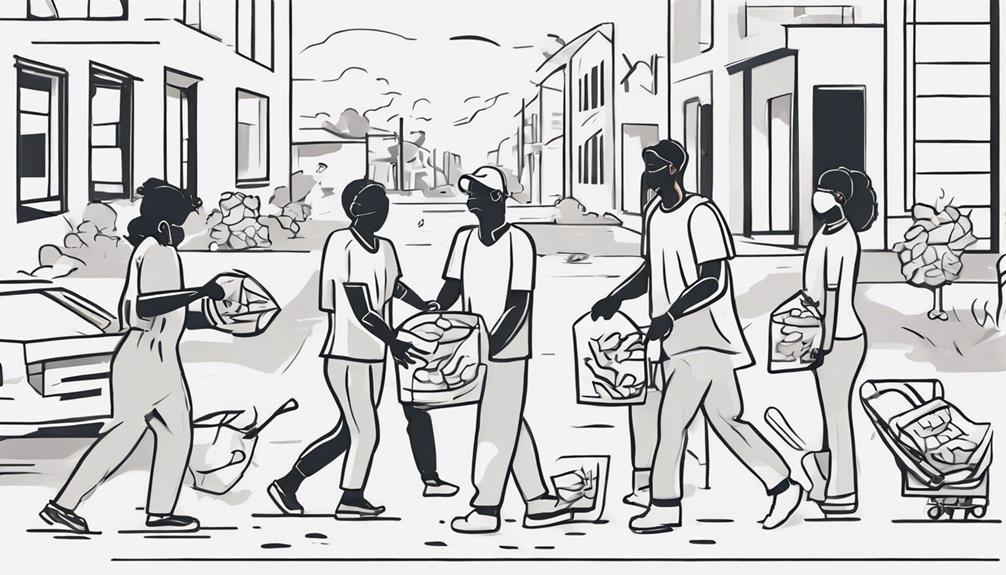
In the aftermath of a disaster, the formation of mutual aid networks emerges as a vital mechanism for communities to directly provide assistance and support to those affected, grounded in principles of solidarity and shared resources. Community members play a central role in establishing these networks, drawing on their collective strengths, resources, and expertise to address the needs of individuals and groups impacted by the crisis. By coming together in mutual aid initiatives, community members demonstrate a shared commitment to helping one another navigate the challenges of post-disaster recovery. These networks operate on the values of cooperation and collaboration, enabling individuals to contribute their skills and resources towards rebuilding community resilience.
Participation in mutual aid networks not only facilitates the provision of immediate assistance but also fosters long-term community empowerment and collective action. By prioritizing the inclusion of marginalized and vulnerable populations, these networks ensure that all community members have equitable access to support and resources during the recovery process. Through grassroots organizing and mutual assistance, community members strengthen social bonds, enhance solidarity, and work towards a more resilient and interconnected society.
Emergency Shelters and Resources
Emergency shelters are crucial for providing immediate housing and essential resources to individuals affected by disasters. These shelters serve as organized hubs that offer safety, sustenance, medical care, and emotional support to those displaced. Community engagement and volunteer efforts are fundamental in establishing and maintaining effective emergency shelter systems.
Shelter Coordination Systems
Efficient management of shelter coordination systems is paramount for ensuring the rapid and effective delivery of essential resources to displaced individuals following a disaster. Emergency shelters play a crucial role in providing temporary housing and basic necessities like food, water, and medical supplies to those affected. These shelter coordination systems are responsible for overseeing the allocation of resources, ensuring the smooth operation of shelters, and coordinating efforts among various agencies, volunteers, and community organizations. By streamlining these processes, emergency response efforts can be more organized and responsive to the immediate needs of disaster survivors. Proper management and coordination within these systems are vital to effectively meeting the urgent requirements of the impacted populations in the aftermath of a disaster.
Basic Needs Provision
Proper allocation and management of resources within emergency shelters are essential for meeting the basic needs of displaced individuals in the aftermath of a disaster. Emergency shelters serve as crucial components of the emergency response, providing temporary housing, food, water, and medical aid to those affected. These shelters also distribute hygiene kits, clothing, and essential supplies to ensure comfort and safety. Community organizations and volunteers play a pivotal role in the operation and staffing of these shelters, contributing to the efficient delivery of services. By serving as central hubs for relief efforts, emergency shelters facilitate the coordination of support services for displaced individuals, aiding in their recovery process and fostering community resilience in the face of adversity.
Community Support Networks
Community support networks play a crucial role in providing essential resources and assistance to individuals impacted by disasters. Emergency shelters serve as temporary housing and offer basic necessities to those affected. In addition to physical support, these networks provide mental health assistance, food, water, and medical care. Local organizations and volunteers work together to coordinate resources for those in need during and after disasters. Establishing communication channels between emergency response teams and survivors is vital in connecting individuals with necessary support services. The collaborative efforts of emergency shelters and support networks contribute significantly to community resilience in times of crisis, emphasizing the importance of addressing both physical and mental well-being in disaster recovery efforts.
Volunteer Mobilization Efforts
Volunteer mobilization efforts serve as a cornerstone in disaster recovery, providing crucial support and services essential for rebuilding communities post-crisis. The following points highlight the significance of volunteer mobilization in disaster response:
- Assistance Scope: Volunteers play a vital role in various tasks such as debris removal, shelter operations, food distribution, and providing emotional support to affected communities, addressing immediate needs post-disaster.
- Coordination: Community organizations and non-profits often collaborate to coordinate volunteer efforts effectively. This coordination ensures that volunteers are deployed where their assistance is most needed, maximizing the impact of their support.
- Establishment of Volunteer Centers: Volunteer mobilization can result in the establishment of volunteer centers. These centers serve as hubs where individuals can register, receive necessary training, and then be dispatched to areas requiring assistance promptly.
- Community Solidarity: The willingness of volunteers to offer their time and skills showcases the power of community solidarity in the collective response to rebuilding after a disaster. The unity and shared goal of these volunteers contribute significantly to the overall recovery efforts.
Community Clean-Up Initiatives
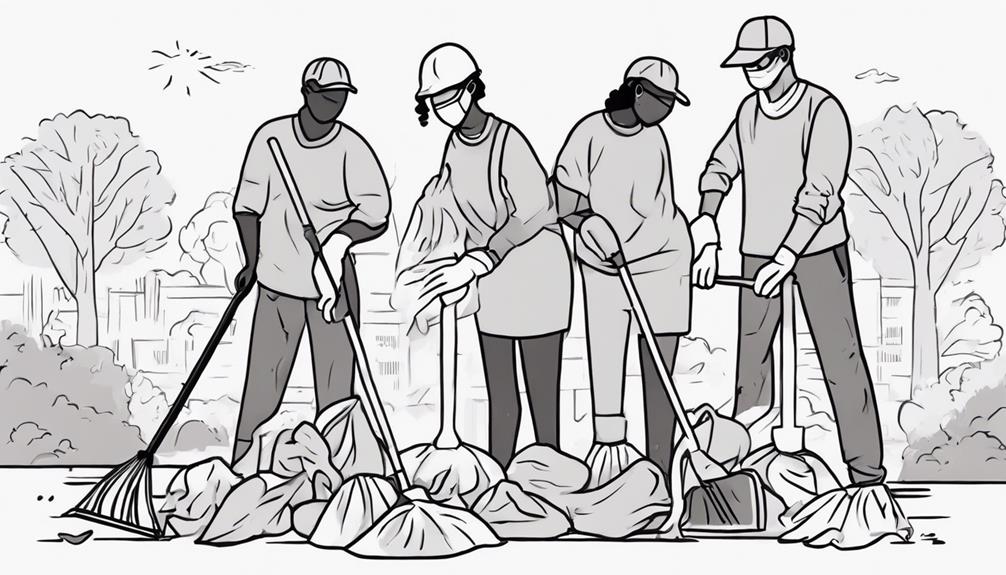
Community clean-up initiatives play a crucial role in post-disaster recovery by mobilizing volunteers to restore affected areas efficiently. These efforts often benefit from the support of local businesses, which contribute resources and expertise to the clean-up process. Additionally, waste disposal strategies are carefully implemented to manage debris and promote environmental sustainability in the restoration process.
Volunteer-Driven Clean-Up Efforts
The collaborative endeavor to restore and rehabilitate disaster-affected areas through volunteer-driven clean-up efforts showcases a remarkable display of communal resilience and proactive engagement. Volunteer efforts are crucial in aiding recovery post-disaster, as they contribute significantly to the restoration of normalcy and the rebuilding process. Here are some key aspects of volunteer-driven clean-up initiatives:
- Community Unity: Volunteers coming together demonstrate a strong sense of unity and solidarity within the community.
- Physical Restoration: These initiatives focus on tasks like debris removal, clearing roads, and cleaning damaged structures to restore the affected areas.
- Emotional Support: Volunteers provide emotional support to those impacted, showing compassion and understanding.
- Resilience Building: By engaging in clean-up efforts, communities showcase resilience, determination, and a commitment to supporting one another during challenging times.
Local Businesses Support
How do local businesses play a vital role in supporting community clean-up initiatives post-disaster? In the aftermath of Hurricane Sandy, local businesses have been instrumental in providing resources and volunteers for community clean-up efforts. Business owners take the lead in organizing clean-up activities to help restore the infrastructure and environment of the affected areas. By collaborating with local organizations and residents, businesses ensure that clean-up operations are effectively coordinated and executed. This involvement not only aids in rebuilding neighborhoods but also fosters a sense of unity and solidarity among community members. The commitment of businesses to supporting clean-up initiatives demonstrates a shared responsibility for community recovery and resilience.
Waste Disposal Strategies
Local businesses play a crucial role in implementing effective waste disposal strategies as part of community clean-up initiatives following disasters. Waste disposal strategies are essential for restoring the environment post-disaster. Here are four key aspects of waste disposal strategies in community clean-up initiatives:
- Debris Clearance: Removing debris is a priority to make the affected areas safe and accessible.
- Hazardous Material Handling: Proper handling of hazardous materials is crucial to prevent environmental contamination.
- Waste Segregation: Segregating different types of waste enables efficient recycling and disposal processes.
- Recycling Initiatives: Recycling plays a significant role in reducing the environmental impact of waste disposal post-disaster.
Donation Drives and Relief Funds
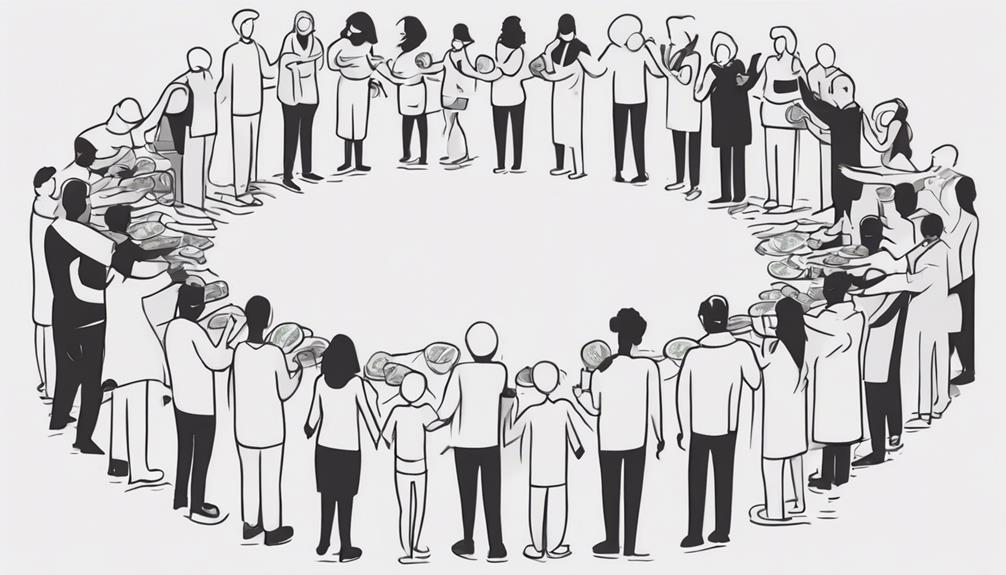
Following a successful mobilization of community resources, donation drives and relief funds played a crucial role in supporting the immediate needs of disaster survivors. Donation drives were instrumental in raising over $10 million for tornado relief efforts in affected communities, providing essential financial support for recovery initiatives. Relief funds were utilized to address urgent requirements such as food, shelter, and medical assistance, ensuring that survivors had access to crucial resources during a time of crisis. Organizations like World Central Kitchen and Operation BBQ Relief further contributed by offering meals to first responders and individuals affected by the disaster, alleviating some of the burdens faced by those on the front lines and the impacted population.
Moreover, mental health specialists were deployed to provide vital support and assistance to individuals coping with the emotional toll of the disaster. Donations were strategically channeled towards grassroots organizations and coalitions focusing on the recovery needs of underserved communities, emphasizing equity and inclusivity in the distribution of aid. Through the concerted efforts of donation drives and relief funds, communities were able to address immediate challenges and pave the way for long-term recovery and resilience.
Emotional Support and Counseling Services
Emotional support services, such as peer support groups and professional therapy sessions, play a vital role in helping individuals navigate the emotional aftermath of a disaster. These services offer a structured environment for individuals to process their experiences, express their feelings, and receive guidance from trained professionals. Community healing workshops also provide an avenue for collective support, fostering resilience and solidarity within affected communities.
Peer Support Groups
Peer support groups play a crucial role in providing counseling services and emotional support to individuals impacted by disasters. These groups offer a safe environment for sharing experiences, coping mechanisms, and emotions with peers who can relate to the challenges faced. Here are some key aspects of peer support groups:
- Safe Space: Peer support groups provide a secure space for individuals to express themselves without judgment.
- Facilitated Discussions: Trained facilitators guide discussions and activities to foster healing and resilience.
- Reducing Isolation: By promoting a sense of belonging and understanding, peer support groups help alleviate feelings of isolation, anxiety, and trauma.
- Positive Outcomes: Participation in peer support groups can lead to improved mental health outcomes and empower disaster survivors.
Professional Therapy Sessions
Professional therapy sessions provide essential emotional support and counseling services to individuals significantly impacted by disasters. Trained therapists create a safe environment for individuals to express their emotions, process trauma, and receive guidance to address mental health concerns. These sessions focus on managing stress, promoting resilience, and aiding in the recovery process. Counseling services offered aim to assist individuals in coping with grief, anxiety, PTSD, and other psychological challenges post-disaster. Access to professional therapy is crucial for supporting the mental health and overall well-being of community members during the aftermath of a disaster. By addressing these mental health needs through therapy sessions, communities can better navigate the challenges and promote healing and recovery.
Community Healing Workshops
In the aftermath of a disaster, community healing workshops serve as vital platforms for individuals impacted by the event to find solace, support, and guidance in navigating the emotional aftermath. These workshops facilitate civic engagement by providing a structured environment for individuals to come together and support one another. Here is how community healing workshops aid in the recovery process:
- Emotional Support: Participants receive emotional support from trained professionals and peers.
- Trauma Processing: Workshops offer a safe space for individuals to process trauma, grief, and loss.
- Resilience Building: Professionals guide attendees in navigating their emotions and fostering resilience.
- Community Connection: Participants find solace in sharing experiences and connecting with others facing similar challenges.
Collaborative Rebuilding Projects
Engaging in collaborative rebuilding projects post-disaster is a crucial endeavor that mobilizes community members to collectively restore infrastructure and homes, fostering unity and resilience within the affected areas. These community-led initiatives bring together local leaders, volunteers, and organizations to pool resources and skills for collective recovery efforts. By working together, communities can address the challenges of rebuilding in a more organized and efficient manner.
One of the key benefits of collaborative rebuilding projects is the sense of unity and solidarity they foster among community members. Through these initiatives, social bonds are strengthened, and a shared commitment to overcoming adversity is demonstrated. Moreover, community-led initiatives focus on implementing long-term sustainable solutions and ensuring the equitable distribution of resources for a comprehensive recovery.
Communication Strategies Post-Disaster
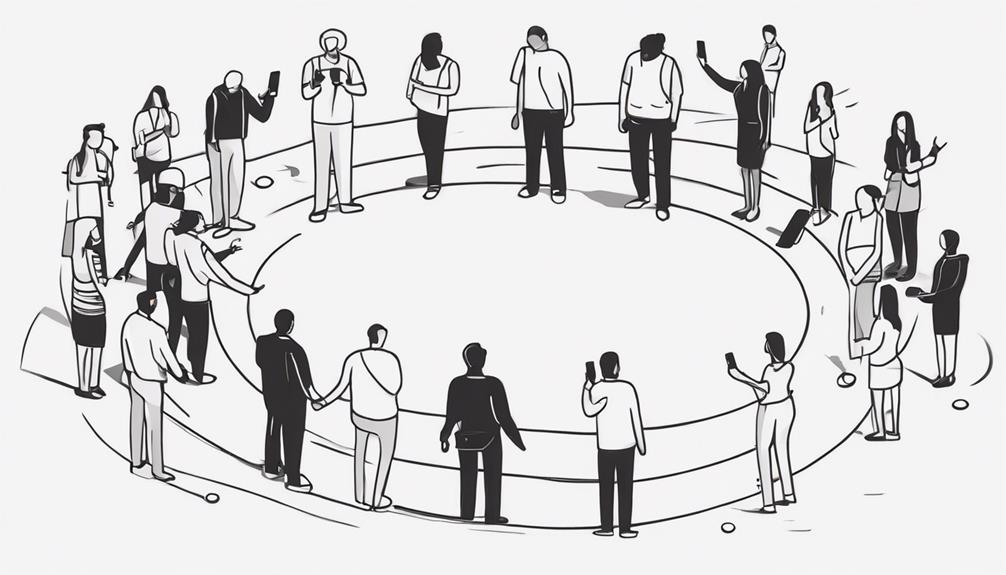
A fundamental aspect of effective disaster response involves implementing strategic communication measures to facilitate coordinated efforts and disseminate critical information efficiently. When considering communication strategies post-disaster, several key points emerge:
- Clear Communication Channels: Establishing clear communication channels helps reduce panic and instills a sense of control among community members.
- Central Information Hub: Creating a central information hub, such as a website or news source, is crucial for sharing updates and guidelines effectively.
- Utilization of Various Platforms: Utilizing social media, community forums, and local media is essential to keep residents informed about recovery efforts and support services.
- Prompt Dissemination of Information: Disseminating information promptly ensures that everyone knows what to do and where to find help in the aftermath of a disaster.
Effective communication strategies post-disaster play a vital role in coordinating resources and providing direction for community recovery. By employing these strategies, communities can come together, support one another, and navigate the challenges of rebuilding after a disaster.
Neighborhood Watch and Safety Measures
Neighborhood watch programs are a vital component of community safety efforts, involving residents in collaborative initiatives to prevent crime and enhance security. Security patrols play a crucial role in maintaining a safe environment, while community emergency response training equips individuals with the necessary skills to address safety concerns effectively. These measures foster a sense of shared responsibility among community members, contributing to the overall reduction of crime rates and improvement of neighborhood quality of life.
Security Patrols Enhance Safety
In enhancing community safety, the implementation of security patrols through neighborhood watch programs has demonstrated a significant impact on reducing crime rates and fostering a sense of security among residents. Security patrols not only deter criminal activity but also promote vigilance and a quicker response to safety concerns through effective communication within neighborhood watch groups. Residents participating in these patrols report feeling safer and more connected to their community, contributing to a 16-26% decrease in crime rates in active neighborhood watch areas. Collaborative efforts in security patrols not only improve overall safety but also enhance community resilience post-disaster, making them a vital component of community safety measures.
- Neighborhood watch programs reduce crime rates by 16-26% in active areas.
- Residents feel safer and more connected through neighborhood patrols.
- Security patrols deter criminal activities and promote vigilance.
- Effective communication within watch groups leads to quicker safety responses.
Community Emergency Response Training
Enhancing community resilience through comprehensive Community Emergency Response Training underscores the fundamental importance of preparedness and proactive safety measures in mitigating the impact of disasters. Community Emergency Response Training (CERT) educates residents on disaster preparedness, basic first aid, and fire safety procedures. Neighborhood Watch programs encourage vigilance, reporting suspicious activities, and enhancing community safety. Safety measures like creating evacuation plans, communication networks, and emergency supply kits are emphasized. CERT volunteers support emergency services during crises, providing immediate assistance to those in need within their neighborhoods. Training sessions empower community members to take proactive steps to ensure their safety and well-being during emergencies.
| Key Points | Details |
|---|---|
| Disaster Preparedness Education | Basic first aid, fire safety procedures |
| Neighborhood Watch Programs | Encourage vigilance and community safety |
| Safety Measures | Evacuation plans, communication networks, supply kits |
| CERT Volunteer Support | Assistance to emergency services during crises |
Unity Through Cultural Events
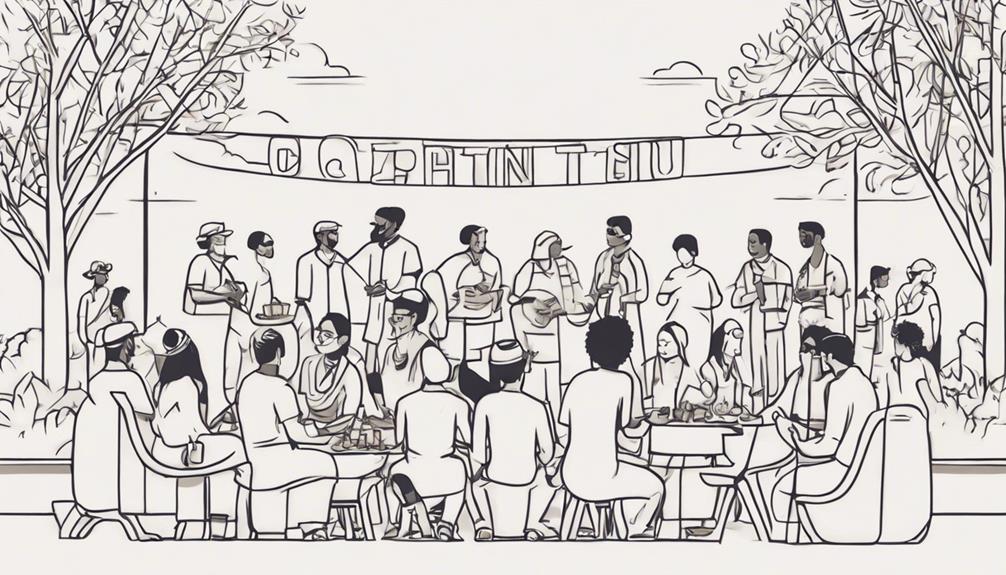
Cultural events following a disaster serve as catalysts for fostering unity and community resilience. These events play a crucial role in community healing by providing platforms for individuals to come together, share experiences, and support one another. Here are four ways in which cultural events promote unity and resilience:
- Celebration of Resilience: Music, art, and food festivals organized post-disaster bring people together to celebrate their ability to overcome challenges and rebuild their community.
- Heritage Preservation: Traditional performances and ceremonies during cultural events honor the community's heritage, instilling a sense of pride and strengthening intergenerational bonds.
- Emotional Connection: Cultural events provide a space for individuals to share their stories, connect emotionally with others, and find solace in the collective experience.
- Sense of Belonging: Participation in cultural activities fosters a sense of belonging and togetherness, creating a supportive environment where community members can lean on each other for strength and encouragement.
Education and Awareness Campaigns
Education and awareness campaigns implemented post-disaster play a vital role in equipping communities with the knowledge and resources necessary for understanding safety protocols and navigating the recovery process. In the aftermath of natural disasters, providing information through campaigns serves to reduce confusion and panic among residents. These initiatives not only inform community members about available resources and support services for rebuilding but also empower individuals to take proactive steps towards recovery and resilience. Effective communication strategies during these campaigns foster unity and collaboration among community members, creating a sense of shared responsibility in the recovery process. By enhancing understanding of safety measures and available support systems, education and awareness campaigns contribute significantly to the overall disaster preparedness and response efforts within communities. This proactive approach can lead to a more coordinated and efficient recovery process, ultimately aiding in the long-term resilience of the community in the face of future natural disasters.
Mental Health Support Groups
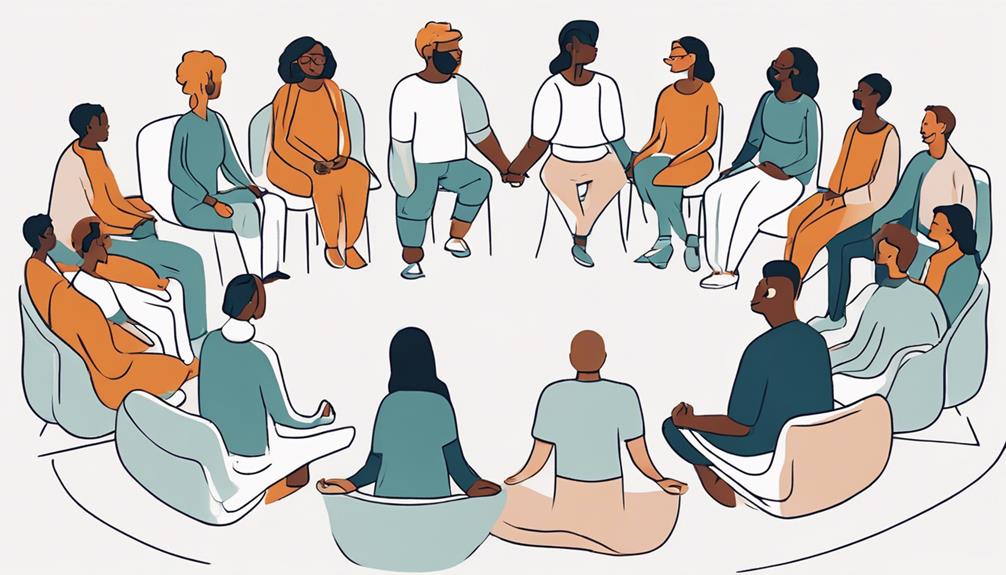
Following the aftermath of natural disasters, mental health support groups emerge as essential sanctuaries for survivors seeking solace and guidance in processing their experiences and emotions. These groups play a vital role in facilitating emotional healing and fostering resilience among individuals affected by disasters. Here are some key aspects of mental health support groups:
- Safe Space: Support groups provide a safe environment where disaster survivors can openly share their experiences and emotions without fear of judgment.
- Comprehensive Support: Participants in these groups receive counseling, therapy, and peer support to help them cope with trauma, grief, and other mental health challenges.
- Reduced Isolation: Engaging in support groups reduces feelings of isolation by connecting individuals with others who have gone through similar experiences, thereby promoting a sense of belonging and understanding.
- Professional Guidance: Trained professionals lead discussions and activities within these groups, focusing on emotional well-being, coping strategies, and the journey towards recovery.
In the aftermath of disasters, mental health support groups serve as crucial pillars of support, aiding in the rebuilding of community connections and fostering mental health awareness.
Sustainable Recovery Practices
Sustainable recovery practices play a pivotal role in fostering long-term resilience and environmental responsibility in rebuilding communities post-disaster. By focusing on eco-friendly rebuilding techniques, renewable energy sources, green infrastructure, sustainable agriculture, and community input, communities can ensure a more sustainable and resilient future.
| Sustainable Recovery Practices | Benefits | Examples |
|---|---|---|
| Eco-friendly rebuilding techniques | Reduces environmental impact | Use of recycled materials in construction |
| Renewable energy sources | Enhances community resilience | Solar panels for energy independence |
| Green infrastructure | Promotes environmental sustainability | Implementation of green spaces and permeable pavements |
| Sustainable agriculture | Supports economic sustainability | Community gardens and local food production |
| Community input | Ensures sustainability priorities | Town hall meetings, surveys, and focus groups |
Incorporating community input in recovery planning is crucial as it ensures that the needs and preferences of the local population are taken into account, leading to more effective and sustainable recovery efforts. By engaging with the community throughout the recovery process, sustainable practices can be prioritized and implemented, ultimately creating a stronger and more resilient community for the future.
Government and NGO Partnerships
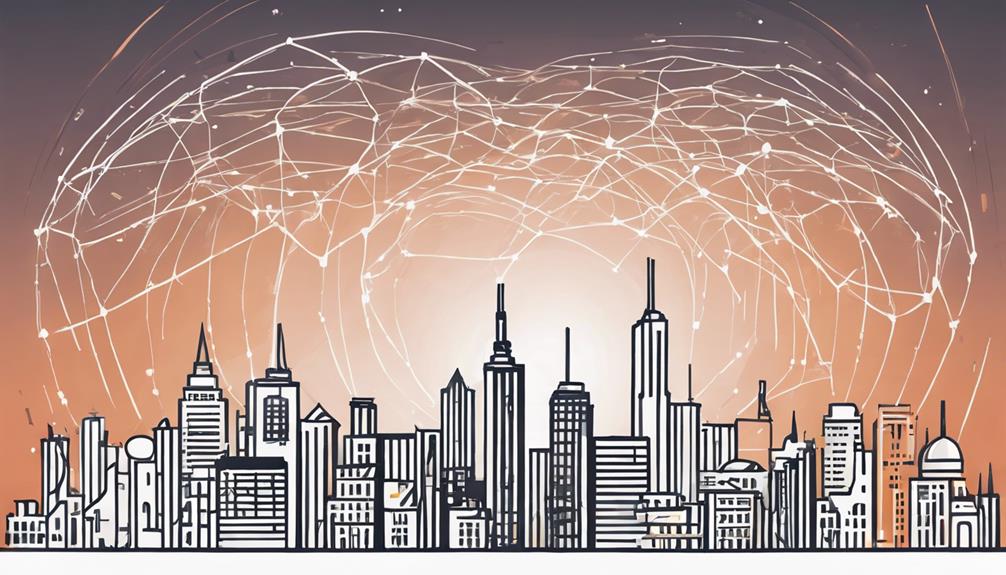
Collaborative efforts between governmental bodies and non-governmental organizations (NGOs) play a crucial role in providing essential support for communities impacted by disasters. The synergy between government and NGO partnerships enhances disaster response and recovery by leveraging their respective strengths and resources. Here are four key ways in which government and NGO partnerships benefit disaster-affected communities:
- Enhanced Coordination: Collaborative initiatives between local leaders, government agencies, and NGOs ensure a more cohesive and efficient response to disasters, minimizing duplication of efforts and maximizing the impact of aid.
- Efficient Resource Allocation: Partnerships facilitate the effective distribution of resources, such as food, shelter, and medical assistance, to those in need, ensuring that support reaches the most vulnerable populations promptly.
- Access to Essential Services: By working together, government entities and nonprofit organizations can provide communities with access to crucial services for rebuilding, such as infrastructure development, healthcare, and psychosocial support.
- Strengthened Resilience: The joint efforts of governments and NGOs post-disaster focus not only on immediate relief but also on long-term recovery, fostering community well-being, and enhancing overall resilience against future calamities.
Long-Term Community Resilience Efforts
Efforts to bolster long-term community resilience post-disaster entail a strategic focus on rebuilding vital infrastructure and reinforcing social cohesion. Investment in rural infrastructure is particularly critical as it serves as the backbone for community sustainability following a disaster. By directing donations to grassroots organizations, a more equitable and comprehensive disaster response can be achieved, ensuring that all community members receive the necessary support. Organizations play a crucial role in addressing community needs and fostering resilience in the aftermath of natural disasters. Emphasizing long-term recovery efforts, including mental health services, is essential for enhancing community strength and cohesion. By prioritizing the rebuilding of infrastructure and promoting social ties, communities can better withstand future challenges and recover more effectively from disasters. Long-term community resilience efforts are integral to creating sustainable and adaptive communities capable of thriving even in the face of adversity.
Frequently Asked Questions
How Do Communities Come Together After a Natural Disaster?
Community support is vital in the aftermath of natural disasters. By fostering strong social connections, communities can come together to provide emotional, physical, and financial assistance to those affected. This support network not only aids in immediate relief efforts but also plays a crucial role in long-term recovery and rebuilding initiatives. Through mutual aid, resource sharing, and collaborative efforts, communities can demonstrate resilience and unity during challenging times.
How Do Communities Recover After Natural Disasters?
Communities recover after natural disasters through coordinated rebuilding efforts. This process involves infrastructure restoration, social support programs, and economic revitalization. Effective recovery strategies prioritize community engagement, access to resources, and long-term planning. By fostering collaboration between residents, local authorities, and organizations, communities can rebuild stronger and more resilient systems. Implementing sustainable practices, leveraging technology, and promoting inclusivity are essential components of successful post-disaster recovery efforts.
How Natural Disasters Bring People Together?
Natural disasters serve as catalysts for community resilience, fostering unity and cooperation among affected individuals. Studies show that 85% of communities experience increased social cohesion post-disaster. Shared adversity prompts individuals to come together, forming mutual aid networks and support systems organically. This collective response highlights the innate human capacity for compassion and solidarity in times of crisis. Natural disasters bring people together, showcasing the power of community solidarity in the face of adversity.
How Did the Community Come Together After Hurricane Sandy?
Community resilience was evident post-Hurricane Sandy as residents united to overcome challenges. Through grassroots relief efforts, collaboration with local businesses, and the tireless work of volunteers, the community worked together to provide food, shelter, and support. Mutual aid networks ensured vulnerable populations received necessary care, while community centers and churches served as hubs for coordinating relief efforts. This collective effort showcased the strength and unity of the community in the face of adversity.
Conclusion
In the aftermath of a disaster, communities demonstrate the resilience and strength necessary to rebuild and recover. Like a phoenix rising from the ashes, they come together through mutual aid networks, volunteer efforts, and collaborative initiatives to support one another. By uniting in solidarity and harnessing their collective resources, communities pave the way for sustainable recovery and long-term resilience. The symbolism of a phoenix symbolizes the transformative power of unity and solidarity in times of crisis.
